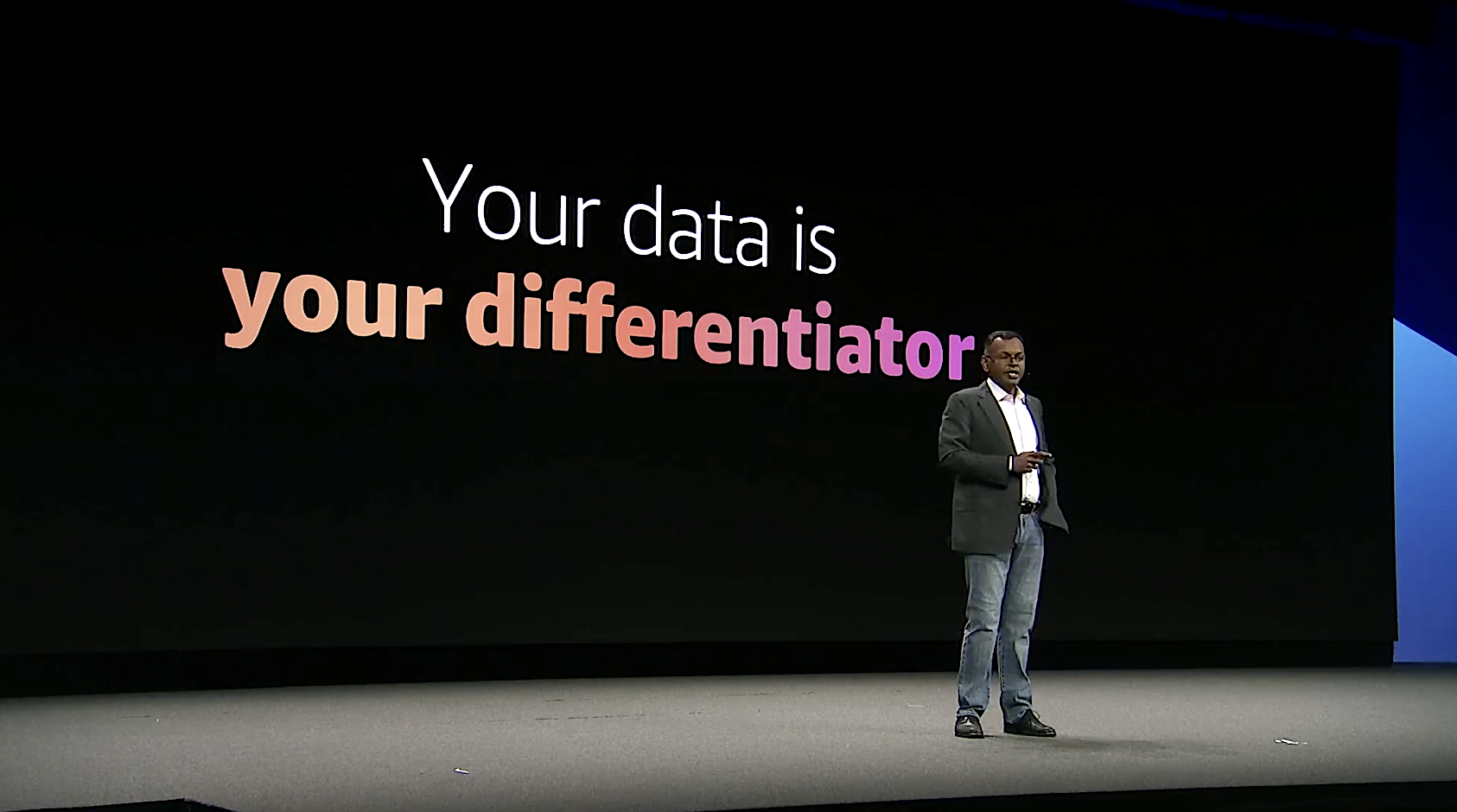 CLOUD
CLOUD
 CLOUD
CLOUD
 CLOUD
CLOUD
Amazon Web Services Inc. today announced the general availability of AWS Entity Resolution, a service designed to help companies organize their data into a form that is easier to process.
The service made its debut at the cloud giant’s AWS Summit New York event. Onstage, executives also introduced new features for a number of existing products. Similarly to the new Entity Resolution service, those feature additions are aimed at making it easier for companies to manage and process their data.
Companies often have multiple records that describe the same object. An electronics retailer, for example, might have one document that describes a handset’s features and a second document with information about its price and availability. Though they focus on the same topic, such records are often stored in different systems.
It can be beneficial to link together related records into a single dataset. A single dataset is easier to work with than several disparate files, especially if those files are scattered across multiple systems. Moreover, merging records can reduce data storage costs in some cases.
Entity Resolution, the service AWS launched into general availability today, eases the process of linking together related files. The cloud giant says that the service is simpler to use than the custom software workflows companies often use for the task.
Users can interact with Entity Resolution through a visual interface. According to AWS, creating a software workflow that finds related records and links them takes a few clicks. Users can manually configure record linking workflows or use a preconfigured AI model provided by AWS to automate the process.
“Today, information about customers, products, or businesses is often fragmented and stored across organizations,” said Dilip Kumar, vice president of AWS Applications. “With a few clicks, AWS Entity Resolution makes it easy for organizations to match records and link workflows that are flexible, scalable, and easily connect to existing applications.”
Another focus of today’s AWS Summit was Amazon OpenSearch Serverless. Launched in January, it’s a managed search engine and analytics service provided by the cloud giant. The service has been updated with a vector engine, currently in preview, that will make it easier for companies to build AI applications.
AI models don’t store the text, images and other files they ingest in their original format. Rather, they turn the ingested data into so-called embeddings. Those are specialized mathematical structures that are easier for a neural network to process than other types of data.
According to AWS, customers can use the new vector engine in OpenSearch Serverless to store their AI models’ embeddings. The engine is capable of storing up to billions of embeddings. Under the hood, it keeps data in AWS’ Amazon S3 object store and automatically adds or removes infrastructure capacity as application requirements change.
“The vector engine automatically adjusts resources by adapting to changing workload patterns and demand to provide consistently fast performance and scale,” AWS product management executives Pavani Baddepudi and Carl Meadows detailed in a blog post. “As the number of vectors grows from a few thousand during prototyping to hundreds of millions and beyond in production, the vector engine will scale seamlessly.”
Besides storing AI models’ information, the vector engine also provides a similarity search capability. The capability allows a neural network to upload a file and find similar records already stored in the engine. Usually, performing that task requires companies to use complex third-party software tools.
The ability to find similar records within a database is essential for many AI use cases. Recommendation engines, for example, work by analyzing what products a user has bought and surfacing similar merchandise. AI-powered cybersecurity tools detect breaches by comparing system access requests with known malicious activity patterns.
Alongside OpenSearch Serverless, AWS today updated two other services: AWS Glue and Amazon QuickSight. They’re receiving generative AI features designed to ease users’ day-to-day work by automating repetitive tasks.
Glue is a data integration service for turning business records into a form that is easier to analyze. Engineers interact with Glue by writing scripts, or notebooks, that define how data should be prepared for analysis. A new integration with Amazon CodeWhisperer, AWS’ generative AI coding assistant, will enable engineers to create those scripts using natural language commands.
QuickSight is also receiving new generative AI enhancements. According to AWS, the business intelligence service now allows users to turn data into graphs by entering natural language instructions into a sidebar. Analytics teams can likewise use text prompts to customize graphs and run calculations on their data.
THANK YOU